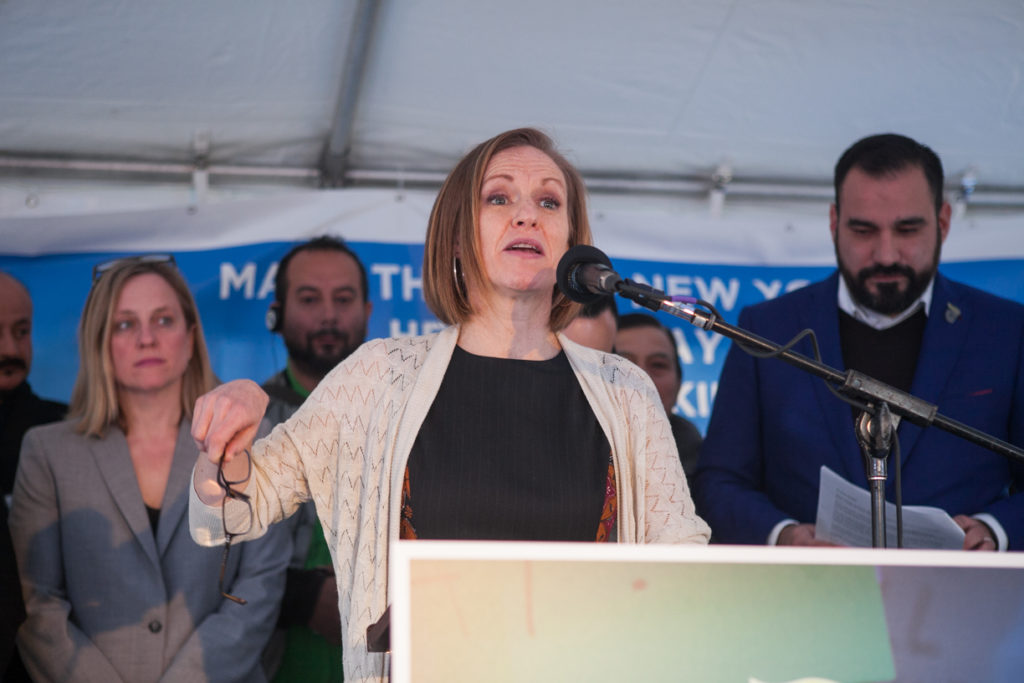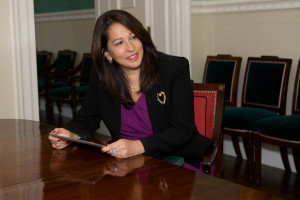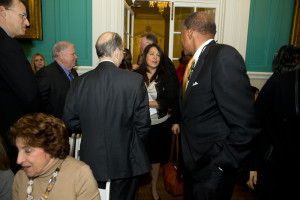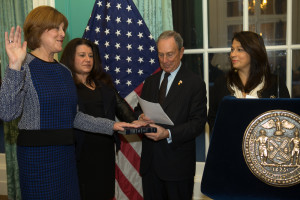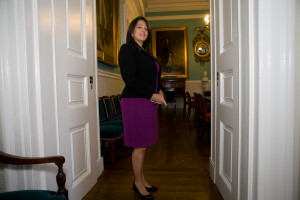By Maurice Pinzon
I grew up in Queens. My father, unlike many immigrants, didn’t read the New York tabloids. Instead, every morning on the subway to Manhattan he picked up the New York Times. It was the best paper in the world, he said. I did the same, so I rarely read Jimmy Breslin or Pete Hamill.
They wrote for the Daily News and other tabloids. But even though I didn’t read their stories, I knew about them and heard about their columns. As someone in the new HBO documentary, “Breslin and Hamill: Deadline Artists” says, “They were everywhere.”
They were, especially Breslin. I had heard Jimmy Breslin speak at Queens College one day when I was a student there and read his book, “Table Money”. I even bumped into him at JFK airport one day.
In the documentary Breslin is asked, “what was the biggest story you ever covered?” “Me!” he answers.
Jimmy Breslin, a larger than life reporter, interviewed and wrote about the lives of the city’s characters and ordinary people. He walked up and down stairs. “The person you want to interview is always on the top floor of a walk-up building,” he told me once.
But Breslin was the biggest and most interesting character of all. He not only wrote the news, he made the news. I got to know Jimmy after I started working for his wife, Ronnie Eldridge, as a council aide. Ronnie had just been elected to the city council and I was invited to her apartment on Central Park West to interview for the job. As I was walking out Jimmy was in the foyer in pajamas. I tried to tell him about the time I had heard him speak.
He promptly interrupted me, and with his gruff voice asked me, “Where do you work? What street?”
I told him I was working at an office on 101st Avenue in Ozone Park, a few steps from Woodhaven Blvd., and a couple of blocks in the other direction from John Gotti’s Bergin Hunt and Fish Club. Jimmy knew Gotti and his world. But he also knew the neighborhood because he had grown up there. Jimmy didn’t have a mobster story for me that day. Instead he wanted to tell me about a lawyer whose office was at 101st Ave. and Woodhaven who was handling a woman’s messy divorce. The enraged husband pushed his way into the lawyer’s office, put a gun to the lawyer’s mouth and was prepared to shoot. Jimmy did an imitation of the lawyer as he talked his way out of that one, with the husband’s gun still in his mouth.
When I worked in Ronnie’s office Jimmy would call her often. I’d pick up the phone sometimes. “What’s going on?” he’d ask.
Sometimes we would talk a little about something going on in the city. Jimmy eventually hired me to be his research assistant, translator, and driver for the book he was working on: “The Short Sweet Dream of Eduardo Gutiérrez,” a true story of a Mexican laborer who had been buried alive in concrete during a construction accident in Brooklyn. He had written about the accident in a column, but Jimmy wanted to write a book-length story about the man: a hardworking Mexican immigrant, one of many whose lives and labor often go unnoticed in this city. Jimmy said the incident reminded him of a 1939 novel, “Christ in Concrete” about Italian-American construction workers. The book was inspired by the author’s father who had died in a construction accident on Good Friday in 1923.
Jimmy didn’t drive, and the men who survived the accident who he set out to interview spoke only Spanish. So I drove and translated. Other days I’d call Jimmy from the Department of Buildings to tell him about the violations against the property where Gutiérrez had died.
Jimmy always wanted as much description as possible. Two of the laborers who survived the construction accident had shared an apartment with Gutiérrez. Jimmy suggested I ask what they did at home. I told him they said they watched, “Betty, la Fea”. The comedic soap opera filmed in Colombia and broadcast in the U.S. on Telemundo, was about an unattractive secretary, Betty, who’s a business whiz. Betty falls in love with the owner of the company where she works and tries to help him out of various financial jams.
One night he called me at home. Was I watching Betty, la Fea? He wanted me to translate. “What’s going on, what are they saying?” he asked. A few years later the show would be adapted into a popular ABC comedy series, “Ugly Betty.”
The profile of Jimmy Breslin in the documentary is riveting, and for the most part, accurate. The filmmakers capture Jimmy’s personality, passion and justice journalism. Jimmy’s gift as a writer was making the lives of men and women vivid and important through his story telling.
But there’s so much more to Jimmy than can be captured in a film of one hour and 47 minutes. More to Pete Hamill too. I wish the film’s directors, Jonathan Alter, John Block and Steve McCarthy had shot two documentaries instead of one. Alter, Block and McCarthy also spent too much time covering the May 1990 “Officially, the Spouse is Out of the House” column by Jimmy and its ensuing debacle. It was a blemish on Jimmy’s record. But that unfortunate episode should not overshadow his many other important contributions.
Something that wasn’t covered in the documentary, for example, was a column Jimmy wrote in September of the same year about Brian Watkins, the Utah tourist murdered in front of his family in a Manhattan subway station. The family was visiting New York to attend the U.S. Tennis Open, a major world-wide international sporting event. Breslin described the agony Brian Watkins must have felt chasing the gang of young men up the subway stairs in an attempt to defend his family as he bled to death.
The city’s mayor, David Dinkins, who was then the Open’s patron saint, had to do something. That same year Watkins was murdered there were 2,245 people killed in the city, up from 1,905 in 1989. Those deaths were more random and not confined to poverty-stricken areas in the city. That worried the elite and there was a demand for action. Dinkins came up with a dedicated tax for more cops, community policing and youth programs. After the program called “Cops and Kids” was instituted, the murder rate began to decline.
If we think of New York’s crime wave beginning with the March 1964 murder of Kitty Genovese on a residential street in Queens, then Watkins’s murder at a mid-Manhattan subway stop in 1990 was the beginning of the decline in crime in New York. There were many other factors, but Jimmy with his column helped focus everyone’s attention. It was Jimmy’s unrelenting reporting of the carnage in the city that allowed for the Watkins murder to become the tipping point. Some nights Ronnie would drive Jimmy to murder scenes. Breslin’s street reporting gave him the credibility to place the blame on the mayor and Governor Mario Cuomo, his good friend.
Last year the murder rate in New York was about 289.
I would have preferred to see fewer interviews in the documentary of Jimmy and Pete Hamill, especially Jimmy, in their later years. Jimmy died in March 2017. It is sad to see these vigorous men looking so frail. Was it the film makers’ intention to portray their mortality as a metaphor for the decline in the impact of big city print journalism?
Nevertheless, Deadline Artists, is excellent. You must watch it if you care about journalism and the power of vivid reporting. If you’re thinking of becoming a journalist or if you just love New York City and its cast of characters.
